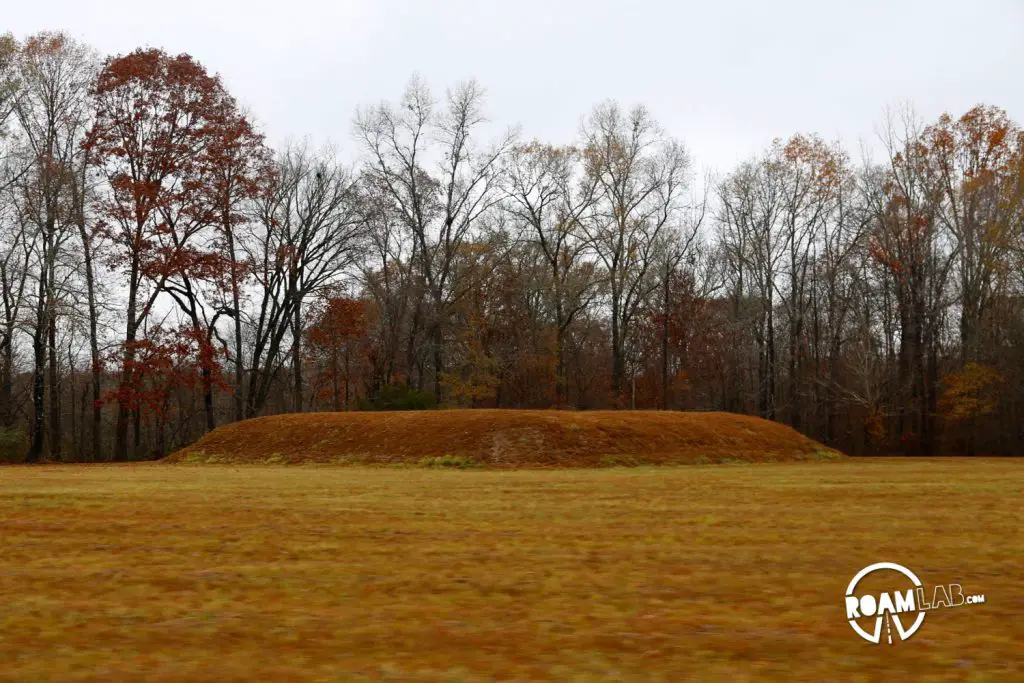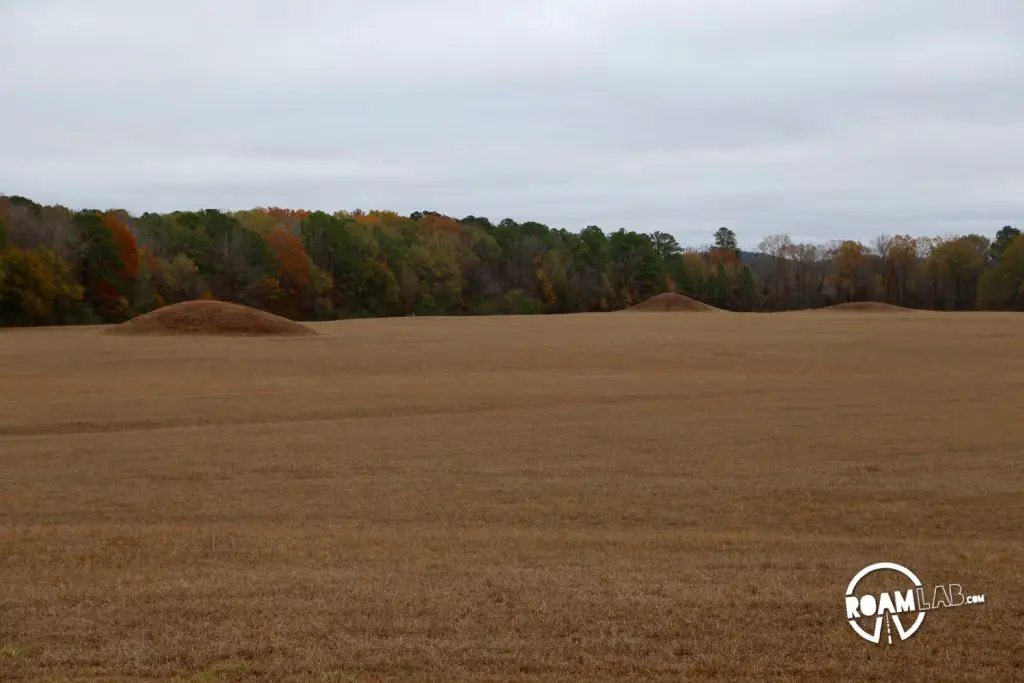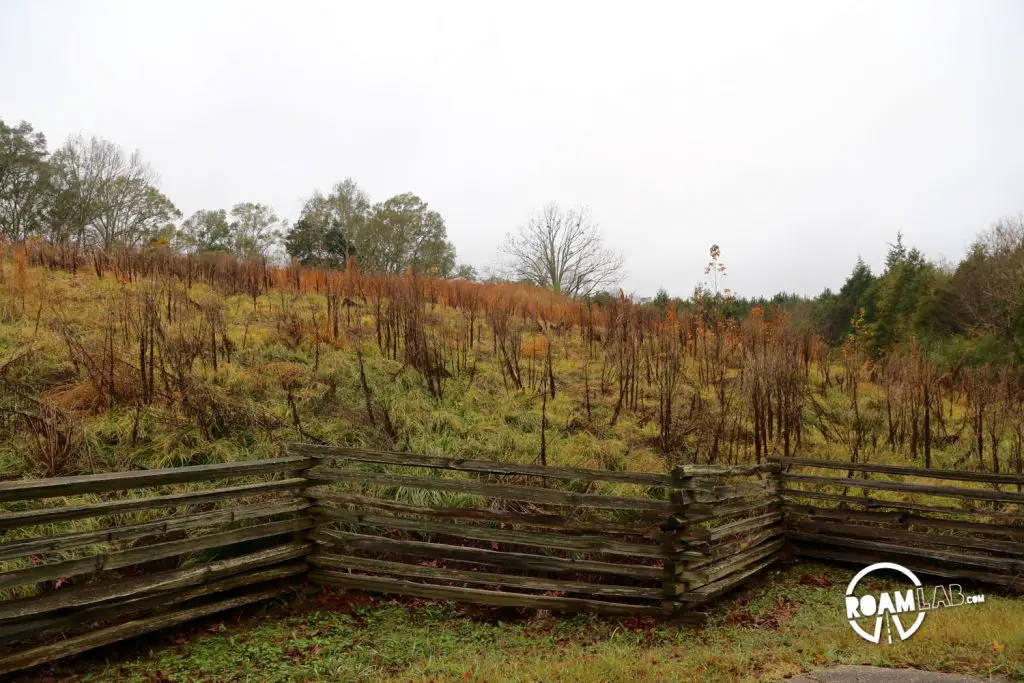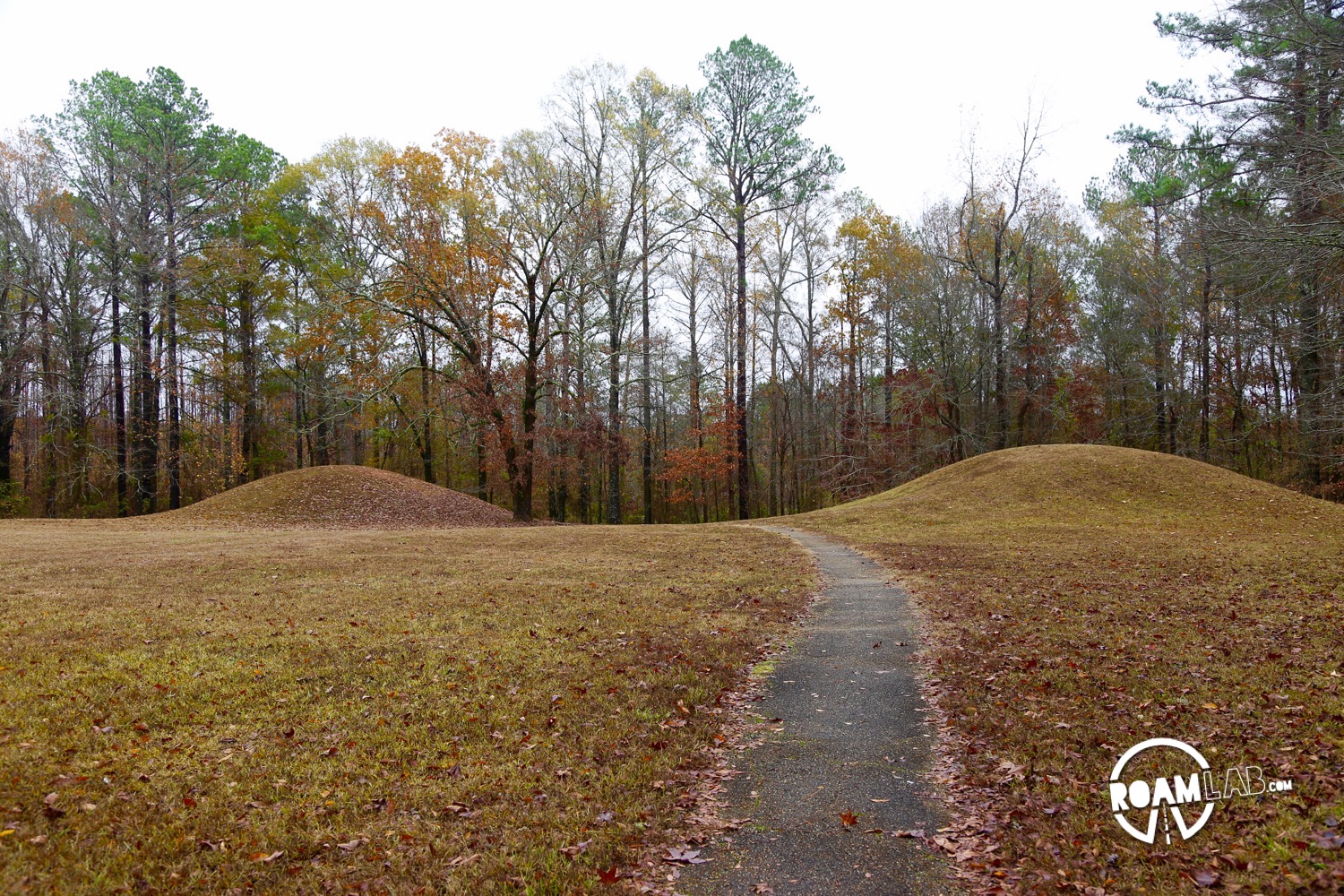When I was a wily ankle biter set loose in the school yard, I had little interest in the play set or sports games raging around me. Instead, I would race up and down the steep hills that flanked my school, much to the chagrin of liability minded school administrators. Some friends and I would dig in the dirt and ferry water from the drinking fountains to mini construction sites. We mixed dirt and water into mud and heaped it into mounds. I have no idea where the idea originated. We just preferred making things over playing games or waiting in line for the slide.
Today, that translates into a general disinterest in waiting in line for the ski lift or sitting around to play cards. Instead, I hike and take pictures. This travel down the Natchez Trace Parkway, however, stirred up an older fascination from muddy depth of my childhood. Along much of the Trace is the work of the Mississippian Mound Builders, ancestors of the Chickasaw, Choctaw, Natchez, and other modern tribes.
The Mound Builders created a large, elaborate culture that stretched from the Gulf of Mexico to the Smokey Mountains and thrived as early as 2000 years ago to 400 years ago. The first evidence of people inhabiting modern day Mississippi can be traced as far back as 12,000 years ago. These were early hunters and gatherers. Yet, the fertile Mississippi made for a hospitable environment that nurtured more complex farming cultures. With that new structure came more advanced cultures, rights, and rules. By the time of the Mound Builders, powerful chieftains oversaw rich communities of farmers and artisans. They produced elaborate pottery and other goods. They marked a shift in the region to a rich culture with structure of ceremony that is still etched into the very ground where they lived.
The titular mounds of the Mound Builders varied in function from burial, to ceremonial, to residential. The earliest mounds researched—such as the Boyd, Bynum, and Pharr—marked the burial locations of prominent members of the tribe. These mounds tended to be relatively small, round domes. They were built in the Middle Woodland period between 100 B.C. and 200 A.D.
Later mounds, typified by the Emerald Mound, were more rectangular with flat tops built in the The Mississippian period between 1000 and 1700 A.D.. Rather than burial mounds, these mounds tended to support structures and host ceremonies. Chieftains residences were built at the top of some flat mounds. Elaborate rituals were performed on top of others.
We hit almost every mound along the Natchez Trace Parkway, but goodness knows there were others that we missed. Some, I wouldn’t have even noticed without a sign and explanation. Others are indisputably man made.
Bear Creek Mound
Bear Creek is one of the older, Mississippian period mounds, built in stages between 1100 and 1300 A.D. The abundance of nuts, fruits, game and fish supported hunters in the area as early as 8000 B.C. During the height of this village site, there would have been a rough temple built on top of the Bear Creek Mound, housing sacred images. We rolled by, but there is little to see beyond the grassy flat topped, rectangular mound. There would be more awesome sites to come.

Pharr Mounds
The parking lot sat, slightly elevated over the field. Looking out on the distant mounds I searched for a path looping by each mound. Were we allowed to walk on the mounds or was that frowned upon? Of course, even if there had been a path, I probably wouldn’t have seen more than the first five that were visible from the parking lot. The Eight, relatively large Middle Woodland Period mounds were scattered across 90 acres of northern Mississippi. It is considered the largest and most important archeological site in the area. Inside the mounds are the remains and possessions of influential tribe members buried between 1 and 200 A.D. In an excavation of four of the mounds in 1966, copper, galena, mica and greenstone goods were found among cremated remains. These raw materials were not sourced from that region, and were clear evidence of distant trading networks at the time.

Bynum Mounds
While there are 6 Bynum Mounds, one two have been restored for public viewing. Like other Middle Woodland Period mounds, these round mounds contain the remains and possessions of tribe members buried between 100 B.C. and 100 A.D. The southernmost mound contains one woman, flanked by burnt oak logs, with copper spirals around her wrists, accompanied with the remains to two additional adults and one child. The larger mound covers a log lined ceremonial chamber with the remains of bodies and artifacts similar to the imported goods found in the Pharr Mounds. Unlike a lot of other mounds along the trace, there is a small loop trail that took us by the two restored mounds to better appreciate their size.

Mangum Mound
Named after the land owner who first excavated the mound in 1936, Mangum Mound is guarded by a roving gang of goats (more on that later.) It is a stealth mound. Despite its impressive size, the mound was covered in tall weeds that nearly disguised the man-made nature of this Mississippian Period mound. As far as the mounds we visited, it is also one of the youngest, built between 1350 to 1500 CE. This also correlates with particularly notable artifacts discovered at the site such as the parts of Mississippian culture repoussé copper plates discovered during an excavation of the mound. We didn’t get to see the plates, though. We only saw the mound.

There used to be more mounds than remain today. Many were on private land and have been looted and irreparably destroyed. That makes these remaining cultural touchstones all the more important to cherish and preserve.
And then there is the Emerald Mound. I’ll get to the Emerald Mound.





